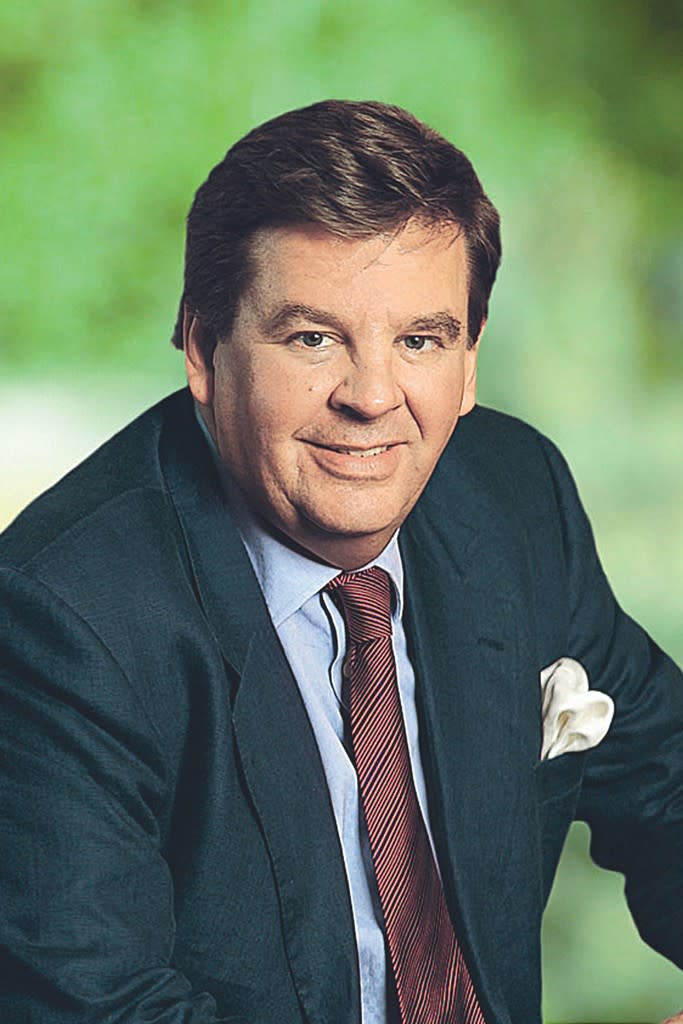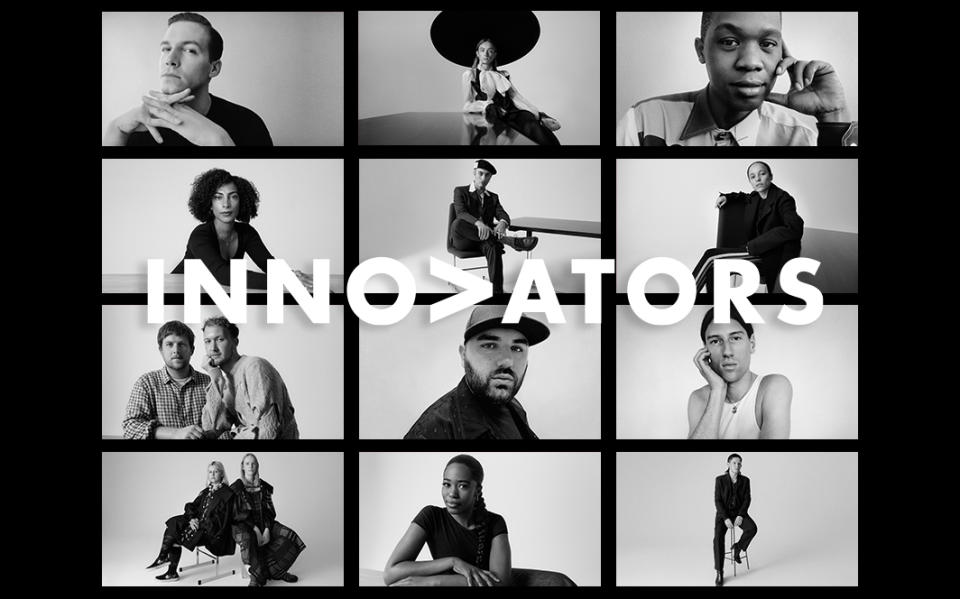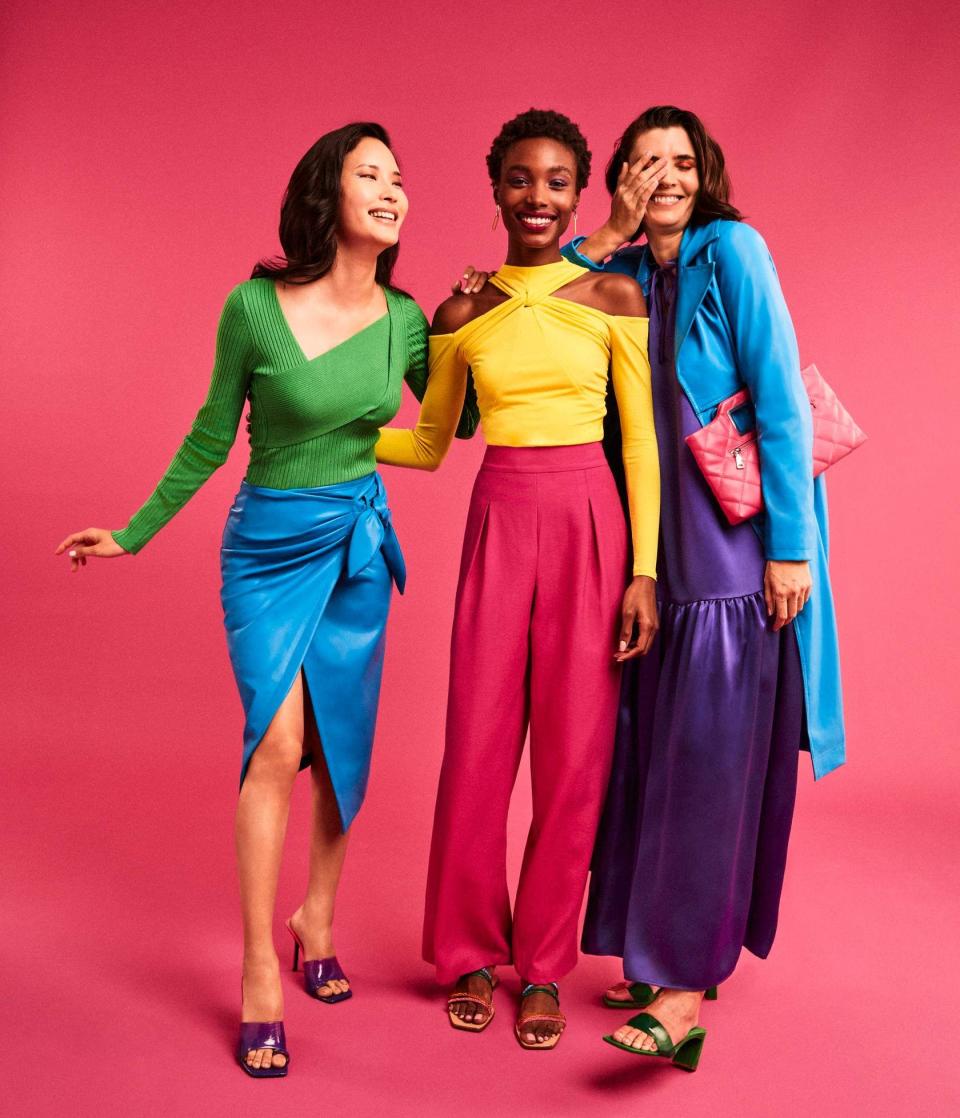Year in Review: Brands, Retailers Go Hyper-digital in a Challenging Landscape
- Oops!Something went wrong.Please try again later.

It was the year that fashion and luxury firms went hyper-digital, expanding their international reach, tapping into new platforms, and honing their strategies for a 21st-century, post-pandemic audience used to shopping 24/7 across multiple devices, regardless of the price tag.
As they expanded their reach around the globe, these retailers and brands also pushed into new territory, namely the metaverse, taking their cues from the gaming world and designing, selling — and even auctioning — virtual clothing and accessories via NFTs and blockchain technology.
More from WWD
It was a milestone year of growth and change, summed up by Saks chief executive officer Marc Metrick, who oversaw the decoupling of the retailer’s e-commerce business from its retail stores. He said the decision to split the businesses was necessary to survive, and to thrive.
“You can’t win fighting a new war with old guns,” he said. “We are in this thing to win. The luxury e-commerce market is going to triple in five years. We needed to position ourselves to take advantage.”
Insight Partners, a private equity firm, entered a partnership with Saks’ parent, Hudson’s Bay Co., to establish the e-commerce business as a stand-alone entity. The PE firm also made a $500 million minority equity investment in Saks, valuing the business at $2 billion.
The split has led to much speculation, including whether the Saks e-commerce division, which has about $1 billion in annual volume, would eventually become a public company. Its value, sources say, could be as high as $6 billion.
Johann Rupert, the founder and chairman of Compagnie Financière Richemont, also made e-commerce the priority this year. He is finally realizing his dream of creating a “neutral” platform with a variety of owners that he hopes will dominate the retail landscape in years to come.

Courtesy Photo
Against an internationally competitive — and costly — backdrop for online retail players, Richemont and Farfetch confirmed they were in late-stage discussions about creating an “open and shared” platform with Richemont’s Yoox Net-a-porter Group to sell fashion, luxury and high-end jewelry.
The new platform will have a broad shareholder base, and no majority owner. It will leverage the tech firepower of Farfetch and see Richemont brands including Cartier and Van Cleef & Arpels — in addition to myriad fashion names — join a new iteration of the Farfetch marketplace.
According to Rupert, other industry players are ready and waiting to put their cash on the table, invest in the new platform and start selling their brands on it, too.
Following the announcement last month, Rupert reminded analysts and the press that, six years ago, he’d “beseeched” other industry players to join YNAP and the Richemont brands on a neutral platform.
“I didn’t think that even the biggest player could do this alone, because it would take too much money. I said that we needed an industry effort. In those days I was looking west, at Amazon, and east, to Alibaba,” said the always forward-thinking Rupert.
In Europe, another big player also made strides: Having shrugged off the shackles of its former owner, the Neiman Marcus Group, the Munich-based Mytheresa pursued a successful initial public offering on the New York Stock Exchange in January.
Since then, Mytheresa has been touting itself as a small yet mighty e-commerce player that focuses on tight relationships with a limited number of luxury brands, and a high-net-worth customer.
The strategy has been successful so far: In the first quarter of its 2021-22 fiscal year, the e-tailer said net sales were up nearly 25 percent to 157.8 million euros. Adjusted net income rose 52 percent to 8.2 million, while adjusted EBITDA was up 35 percent to 14 million euros.

Courtesy
The company said it expects net sales in the full fiscal year to be 22 to 25 percent higher than anticipated, landing between 700 million euros and 750 million euros, thanks to a higher-spending clientele and a new Curated Platform Model, which allows it to plug directly into individual brands’ inventories for better access to stock, in-season replenishment and deliveries.
The CEO Michael Kliger believes there is no turning back, and that digital will rule in the months — and years — ahead.
“The shift of consumer demand to online luxury has clearly accelerated in recent months,” he said. “We strongly believe this trend will continue in the post-pandemic world, probably reverting to the strong market growth rates we had seen before the pandemic.”
While the year saw the big marketplaces jockey for position, looking to merge and piling on more services to attract sellers and shoppers, more players tried to get in on the action.
Retailers that were slow to believe in digital have adopted an “If you can’t beat ‘em, join ‘em” approach, and are looking to set up marketplaces of their own.
Jeff Gennette, Macy’s Inc.’s chairman and CEO, revealed plans to launch a new digital marketplace with the tech company Mirakl in the second half of 2022.
He’s promised to connect “carefully selected third-party sellers with our customers in a scalable way and provide even greater breadth of assortment of exciting products to deliver on our promise of style and curation.”
He said the digital business is on track to generate $10 billion in sales by 2023, “and that figure does not include the incremental revenue we expect this new marketplace platform to generate for Macy’s.”
Macy’s has also been pressured by activists into separating its brick-and-mortar and web businesses, à la Saks, and is still mulling its options, and testing out the notion, with the help of AlixPartners. Kohl’s, too, has faced pressure from activists to split its e-commerce operation into a separate company.

Matchesfashion's Innovator Program
And as Farfetch, Amazon, Shopify and other platforms go macro, and look to change the whole market, other brands are focusing in on being smarter across their digital ecosystems and building one-to-one relationships with consumers online.
This involves a mutlipronged approach that has brands diving into data and analytics, spending more on digital marketing, livestreaming, and working more with marketplaces.
In general, many brands have made a cognitive shift and are thinking digitally first. Steve Rendle, chairman, president and CEO of VF Corp., which counts Supreme, The North Face and Vans among its brands, said his company was emerging from the pandemic stronger.
“We’ve accelerated our strategy to be a more digitally enabled enterprise while driving significant investment behind key capabilities to connect with our consumers,” Rendle said. Key to that effort is to “accelerate our consumer-minded, retail-centric, hyper-digital business model transformation,” he added.
Another retailer that’s sharpening its digital credentials is Matchesfashion.com. After a false start hiring the former Amazon executive Ajay Kavan (who left earlier this year after just 12 months), the retailer has installed the former Printemps CEO Paolo de Cesare in the top job.
De Cesare described Matchesfashion as “driving digitization of the luxury journey for its global customers,” and said he was confident that with the rapid transformation and growth of the luxury market, “we can continue to strengthen our position as a fashion pioneer,” and become “the most exciting luxury destination for our customer.”

Challenges lay ahead: While Matches was an early mover on the digital front in Europe, its business still relies partly on physical stores, including its Carlos Place town house in Mayfair, and in-person events.
As a result, it was hit hard by the COVID-19 related lockdowns and Brexit, too, which has impeded its ability to move stock quickly around the world.
For the year ended Jan. 31, 2021, the company saw a 9 percent decline in revenues to 392.1 million pounds. Losses in the period widened to 36.6 million pounds from 5.9 million pounds.
Matchesfashion said in its Companies House report that the waves of lockdown throughout 2020 also led to lower demand for apparel associated with events and social gatherings. For example, occasion wear and vacation wear account for about 30 percent of sales in a normal year. The company said its total wedding edit in 2020 was about half what it was in 2019.
Sign up for WWD's Newsletter. For the latest news, follow us on Twitter, Facebook, and Instagram.

